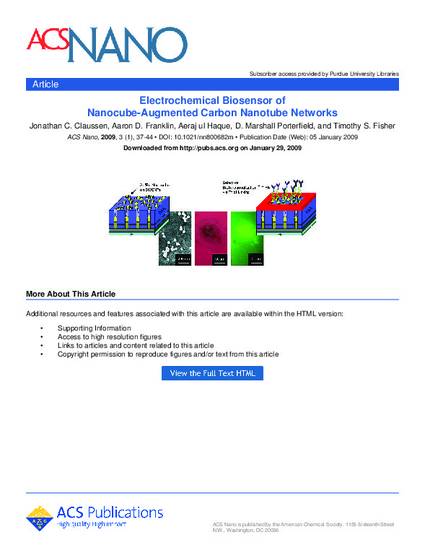
Networks of single-walled carbon nanotubes (SWCNTs) decorated with Au-coated Pd (Au/Pd) nanocubes are employed as electrochemical biosensors that exhibit excellent sensitivity (2.6 mA mM−1 cm−2) and a low estimated detection limit (2.3 nM) at a signal-to-noise ratio of 3 (S/N = 3) in the amperometric sensing of hydrogen peroxide. Biofunctionalization of the Au/Pd nanocube-SWCNT biosensor is demonstrated with the selective immobilization of fluorescently labeled streptavidin on the nanocube surfaces via thiol linking. Similarly, glucose oxidase (GOx) is linked to the surface of the nanocubes for amperometric glucose sensing. The exhibited glucose detection limit of 1.3 μM (S/N = 3) and linear range spanning from 10 μM to 50 mM substantially surpass similar CNT-based biosensors. These results, combined with the structureʼs compatibility with a wide range of biofunctionalization procedures, would make the nanocube-SWCNT biosensor exceptionally useful for glucose detection in diabetic patients and well suited for a wide range of amperometric detection schemes for clinically important biomarkers.
Available at: http://works.bepress.com/jonathan_claussen/2/
